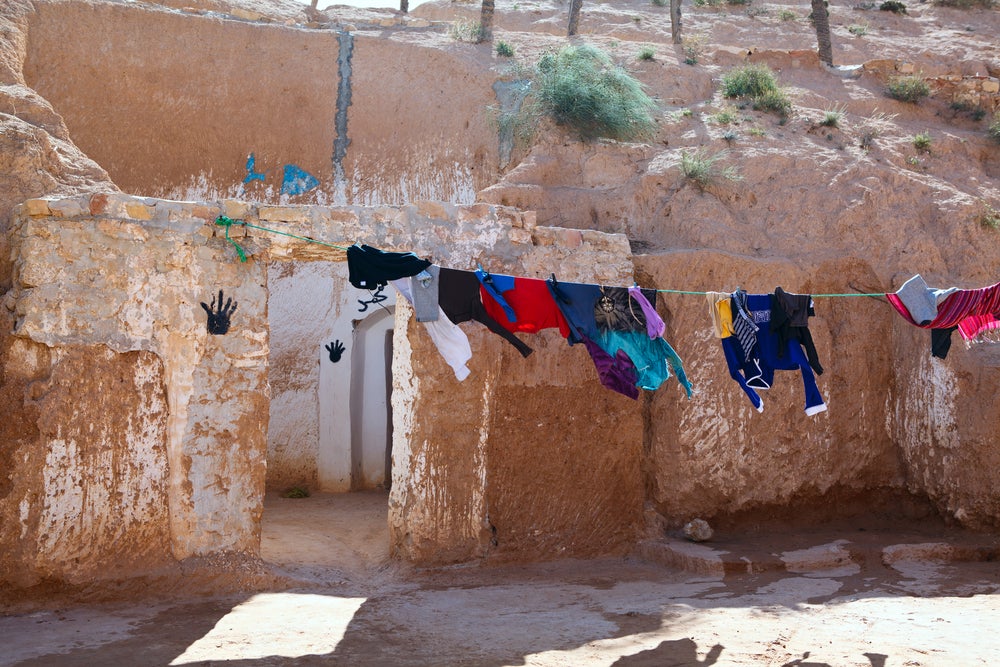 Ménage à Matmata, Tunisie. (Photo: Kekyalyaynen / Shutterstock.com)
Ménage à Matmata, Tunisie. (Photo: Kekyalyaynen / Shutterstock.com)
Since the COVID-19 pandemic hit Tunisia last Spring, one of the most critical questions has been how will it affect people across the country.
New research suggests that the pandemic is likely to exacerbate Tunisia’s development challenges by reversing the recent trend of poverty reduction. More people will likely fall below the poverty line and existing poverty will likely get more severe through four broad channels: labor income, non-labor income, direct effects on consumption, and the disruption of services.
Which Tunisians are likely to be hit the hardest by the pandemic, and to what extent can the government mitigate the impacts? A new World Bank working paper that focuses on labor income and consumption finds that the government’s emergency compensatory measures could do a great deal to lessen the losses on the poverty front.
Poorest and Most Vulnerable Hit the Hardest by Covid19
Our new study combines labor and price shocks to simulate the impact of COVID-19 on household welfare under two scenarios:
Optimistic: uses recent World Bank estimates of -8.8% real GDP growth, at constant factor prices;
Pessimistic: uses growth of -11.9% (that is, the economy achieves the same growth as that during the first half of 2020). It draws on household phone surveys during COVID-19 (by the National Institute of Statistics, in collaboration with the World Bank) and Tunisia's 2015 household budget survey.
The results show that poverty is projected to increase by 7.3% points under the optimistic scenario and by 11.9 percentage points under the pessimistic one. This implies a more than 50% increase in poverty in the first scenario and almost a doubling of the poverty rate in the second – reversing the trend of declining poverty over the past decade. Additionally, more people are expected to lose income and become vulnerable to falling into poverty. The poverty gap (the poverty deficit of the entire population) would increase from 3.2% to 4.4% under the optimistic, and to 5% under the pessimistic one.
Households with per capita consumption in the poorest 20% of the population – which are concentrated in Tunisia’s Center West and South East regions – would be hardest hit. As for the most vulnerable individuals, they are likely to be women, living in large households, without access to health care and employed without contracts. While 42% of people currently employed in Tunisia have no contract, 53% of individuals who have fallen into poverty as a result of the pandemic and 47% of the most vulnerable group are likely to be employed without a contract.
Government Measures Mitigating Covid19 Impacts
On March 21, 2020, in an effort to mitigate some of the impacts of the pandemic, the Government of Tunisia announced, enacted, and gradually implemented an exceptional social and economic emergency plan, which targets the poorest and most vulnerable – covering almost 1.1 million people (table 1). By simulating the impacts of the pandemic on welfare in the presence of all these compensatory transfer measures, our research finds that there would be a positive impact on poverty. Specifically, the increase in poverty would be 6.5 percentage points with the mitigation measures– while poverty would increase 7.3 percentage points in their absence (see table 2). Similarly, extreme poverty, the poverty gap, and inequality would all fare better with the measures than without.
543 Words
Table 1: Tunisia’s compensatory measures for mitigating COVID-19 impact
|
Target Population |
Amount of support |
Period |
Target number in theory |
|
Needy families (PNAFN / AMG1) |
50TND (15 dollars) |
April 2020 |
260,000 Households |
|
60TND (17 dollars) |
May 2020 |
||
|
Families with limited income (AMG2) |
200 TND 200 TND (70 dollars) |
April +May 2020 |
370,000 Households |
|
Families caring for a person without family support |
200 TND (70 dollars) |
April 2020 |
779 Households |
|
Low retirement pensions (less than 180 TND-60 dollars) |
100 TND Avril (30 dollars) |
April 2020 pension increased to 180 dinars from August |
140,000 Households |
|
Famille « Istimarat » (excluding families with limited income)
|
200 TND (70 dollars) |
May 2020 |
301,149 Households |
Source: Data accessed from Ministry of Social Affairs.
Note: Emergency measures announced on March 21, 2020.
Table 2: Impact of COVID19 with mitigation measures
|
Before COVID |
After COVID |
After mitigation measure |
Difference (without mitigation measure) |
Difference (with mitigation measure) |
|
|
Extreme poverty |
2.9 |
7.4 |
6.9 |
4.5 |
4 |
|
Poverty |
13.7 |
20.9 |
20.2 |
7.3 |
6.5 |
|
Poverty gap lower |
0.5 |
2.0 |
0.7 |
1.5 |
1.3 |
|
Poverty gap upper |
3.2 |
6.4 |
4.2 |
3.2 |
1 |
|
Inequality |
37.0 |
39.5 |
39.2 |
2.5 |
2.2 |
Source: Authors’ calculations based on EBCNV 2015 (Enquête Nationale sur le Budget, la Consommation et le Niveau de Vie des Ménages).
Note: (i) Simulations are based on the announced measures as there is no access to information on actual spending under these measures. (ii) Data used does not allow us to focus on a region. Moreover, the activities targeted by government measures are more concentrated in Coastal regions. The South Region, where some of the riots have been concentrated, is characterized by the oil extraction industry and some chemical industries that do not employ a large workforce.
These findings show that, going forward, it would be extremely important to ensure that economic growth benefits the poor and thus be inclusive. Fostering jobs as well as alternative livelihood mechanisms in the regions and areas that have been left behind may be important to consider. The additional shock introduced by COVID-19 is expected to increase Tunisia’s poverty rate and inequality. This bunching of the population just above the poverty line has key implications in the face of a high risk that the country faces in the future. Many households could fall back into poverty due to environmental or economic shocks. Thus, mechanisms to protect this large vulnerable subgroup should be a top priority.





Join the Conversation